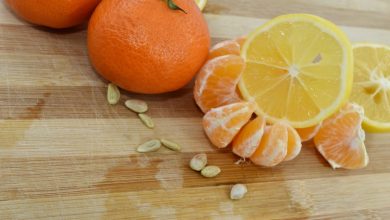Is Wheat A Fruit Or Vegetable, Or A Grain? [ANSWERED]

Wheat is a popular food all around the world and is very important for feeding people everywhere.
Some people may think wheat is a fruit or vegetable because it comes from a plant. Others believe it’s a grain because we use it to make things like bread and pasta. So, what exactly is wheat? In this post, we will look at what makes wheat unique. We will also clear up some wrong ideas about it to help you know more about this everyday food.
Table of Contents
- What is wheat?
- Characteristics of wheat
- 1. Plant structure and growth habits:
- 2. Nutritional content:
- 3. Seed structure:
- 4. Mode of growth:
- 5. Uses in food products:
- So, Is Wheat A Fruit Or Vegetable, Or A Grain?
- Why is wheat considered a grain?
- 1. Seed structure:
- 2. Mode of growth:
- 3. Nutritional content:
- Common misconceptions about wheat’s classification
- Conclusion
What is wheat?
Wheat is a kind of cereal grain that’s part of the grass family. Lots of people around the world eat it. Wheat plants are pretty tall, growing up to five feet, and have long leaves that are narrow. The scientific name for wheat is Triticum aestivum.
The grain of the wheat has a coat around it called the husk or hull, which we have to take off to eat what’s inside. The grains are small and usually a light brown color.
Wheat is very good for you. It gives you carbs, protein, and fibers. It also comes with vitamins like B vitamins and minerals like iron and zinc. You can find wheat in many kinds of food, like bread, pasta, cereal, and crackers.
Characteristics of wheat
Wheat has some special things about it that make it an important food for us to eat.
Let’s check out the main things about wheat:
1. Plant structure and growth habits:
Wheat grows every year and can live in places that are very hot or very cool. It usually reaches between two to four feet tall and has long green leaves. Wheat plants can pollinate by themselves.
2. Nutritional content:
Wheat is packed with nutrients. It has a lot of carbs, protein, and dietary fiber. It is also rich in B vitamins, iron, zinc, and other important things for your health. Different types of wheat and the way they are processed can change their nutritional value.
3. Seed structure:
The wheat grain is egg-shaped and made of different layers. The husk is the outermost part and we can’t eat it. Under that is the bran, which has a lot of fiber and good stuff. The middle part, the endosperm, has most of the carbs and proteins. The smallest part is the germ, which is full of vitamins, minerals, and good fats.
4. Mode of growth:
Wheat is a type of plant with one seed leaf, called a monocotyledonous plant. It has roots that spread out to soak up water and food from the ground.
5. Uses in food products:
Wheat is used in lots of foods such as bread, pasta, and cereal. It’s also ground to make flour for baking and cooking. Its different features make it a very important crop for making food.
So, Is Wheat A Fruit Or Vegetable, Or A Grain?
Wheat is definitely a grain, not a fruit or vegetable. It’s a grain because of the way its seeds are built, how it grows, and what’s inside its seeds. Grains are the seeds of grass-like plants, and many people around the world use them for food. Wheat is this kind of seed. We harvest it, take the husk off, and get the inner part, called the endosperm. This is what we use to make flour and other foods. Wheat is quite clearly a grain.
Why is wheat considered a grain?
Wheat is called a grain for several reasons that make it like other cereal grains. The reasons are:
1. Seed structure:
Wheat grains have a special seed structure with different layers including a husk, bran, endosperm, and germ. These help the seed grow into a big plant.
2. Mode of growth:
Like other cereal grains, wheat is a plant with one seed leaf and a root system that gathers water and food from the soil.
3. Nutritional content:
Wheat is full of nutrients such as carbohydrates, proteins, and fibers. It also has vitamins and minerals. Other cereal grains have similar nutrients, which makes them good to eat.
These things help us understands why wheat is called a grain, not a fruit, vegetable, or anything else. Each type of plant is different and has its own way of growing and being used.
Common misconceptions about wheat’s classification
Let’s fix some mistakes people make about wheat:
- Wheat is a vegetable: Even though wheat comes from a plant, it’s not a vegetable. Vegetables are things like leaves, stems, or roots you can eat. Wheat is different because of its seed structure and the way it grows.
- Wheat is a fruit: Wheat does have seeds and a plant, but it’s not a fruit. Fruits are soft and have seeds inside, but wheat grains don’t have that soft part around the seeds.
- Wheat is a legume: Wheat and legumes like peas or beans are both foods, but they’re not the same. Legumes have seeds in pods, but wheat grows differently.
- Wheat is a refined carbohydrate: Not all wheat is made into refined carbs. Whole wheat has the bran, germ, and endosperm and gives more fiber, protein, and nutrients.
Knowing the science behind how plants are grouped helps us understand what we eat. Getting rid of wrong ideas about wheat means we know more about what it gives our bodies.
Conclusion
In the end, wheat is a grain because of its seeds, how it grows, and what’s inside. It isn’t a fruit, vegetable, or any other food category. Knowing how plants are grouped helps with choosing what to eat. Understanding wheat better means we can appreciate its value in our diet.







